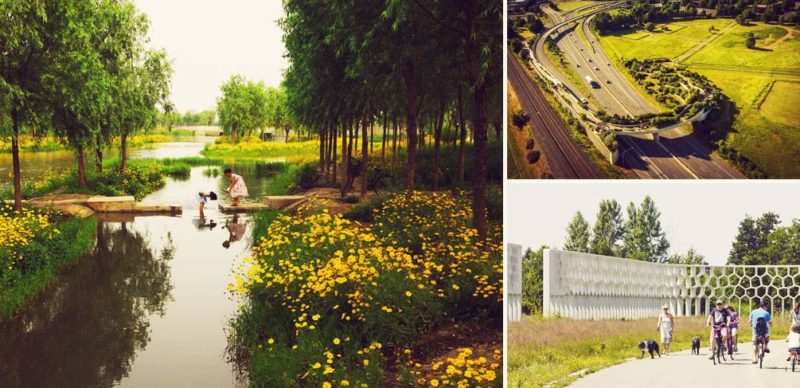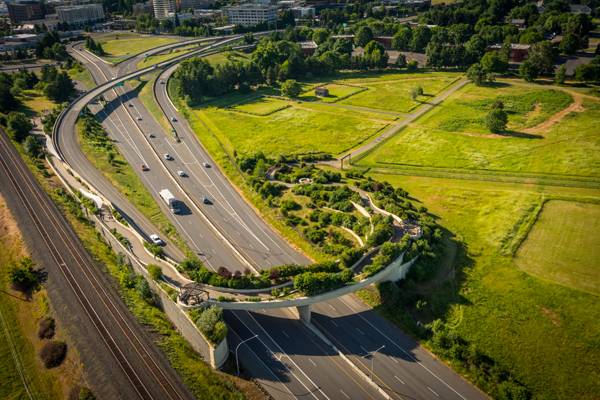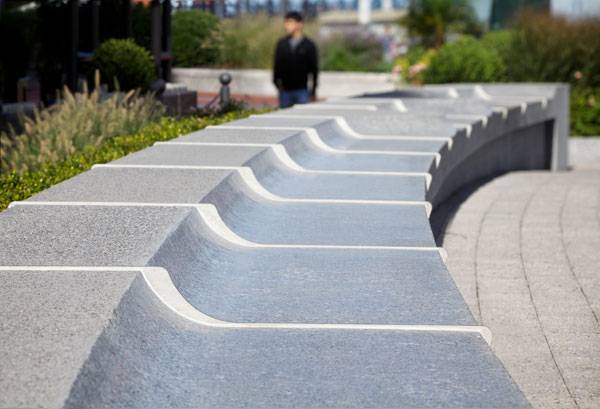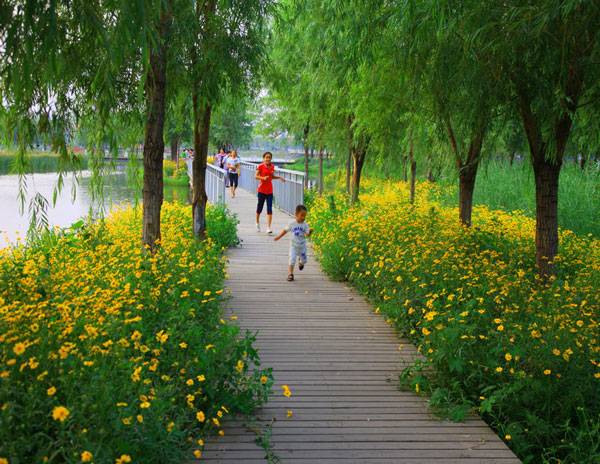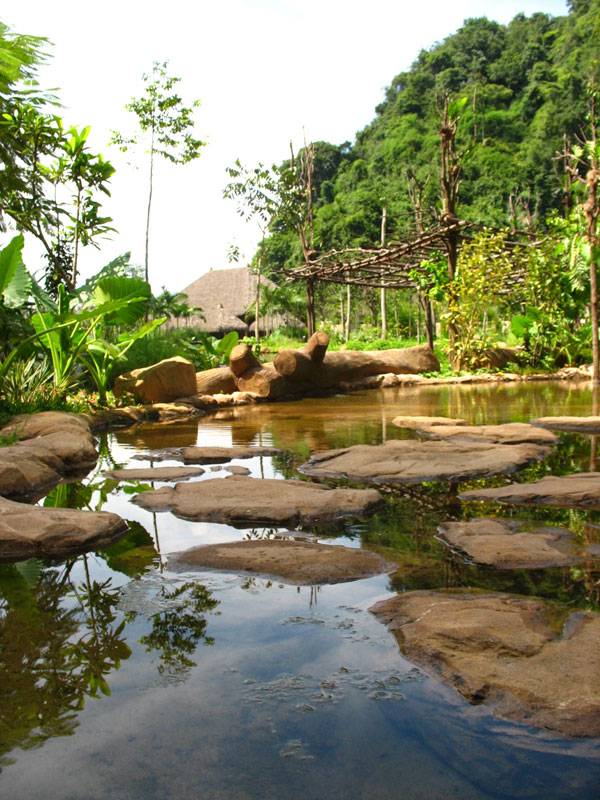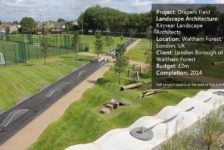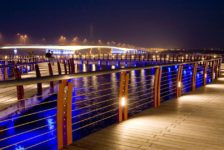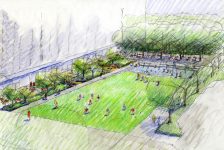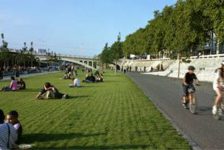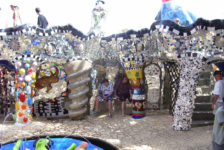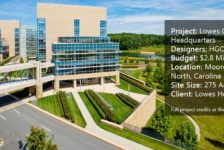Article by Kamil Rawski – We take a moment to explore 10 of the best ecological designs in the world and look at how they merged with their environment. It is hard to choose only 10 designs from among hundreds, even if we are just considering the most ecological ones. First, we have to think about what it means to be ecological. I have tried to choose projects that represent aspects such as increasing biodiversity, protecting the environment, changing (or healing) polluted sites, using sewage systems intelligently, supporting water retention, and connecting people with nature. How many of these can be combined in one project? Aesthetical features also must be taken into consideration. Human interference in nature is not always a catastrophe. When the designers have skills and care about the environment, great projects can be created. An appropriate approach to the design process can connect people with nature without disturbing it.
Best Ecological Designs
Below are the Top 10 examples of the world’s best ecological designs:
10. Vancouver Land Bridge by Jones & Jones Architecture, Vancouver, Washington, USA
The Vancouver Land Bridge is a kind of a wildlife crossing that allows animals to cross human-made barriers in a safe way. The bridge reconnects the Columbia River with Fort Vancouver in natural way, using fluent, curved shapes. The whole design is complemented by sustainability solutions such as storing rainwater to irrigate many native plants (e.g. California Oatgrass Danthonia californica and Small Fescue Vulpia microstachys), supporting this system by the river during the dry season.
9. Park Pergola by West 8, Utrecht, The Netherlands
Everyone interested in green walls knows how many benefits they bring. But what happens when we build a huge pergola? The designers from West 8 had to ask themselves this question. They designed the transparent, honeycomb-like pergola to be about 3.5 kilometers long and 6 meters high. Over the course of time, it will be overgrown by climbing plants and become a house for a lot of animals, such as owls, bats, and many others. That’s what can be called increasing biodiversity. The designers perfectly show how to create an elegant, miniature eco-system.
8. Atlantic Park by Battle I Roig Arquitectes, Santander, Cantabria, Spain
The Vaguada de las Llamas is a space created as the result of development of the city. Unfortunately, this special area was degraded, risking loss of its unique biodiversity, including all species of reeds. Thanks to the significant location of this place, it was decided to transform it into Atlantic Park. Community functions had to be balanced with protecting unique ecology. The designers were able to do it by dividing the park into three areas categorized by their use, character, and planting scheme according to the topography, and they did it very well. They also designed many features, such as an outdoor amphitheater, an artificial lake, and botanical gardens. Certainly this project shows that it is possible to make a space friendly for both the community and the environment.
7. 23o Estate by Shma CO, Khao Yai, Nakornratchsima, Thailand
Designers from Shma fit this design into the existing landscape, which was threatened by erosion due to surrounding mountains. They decided to embrace this natural process in their design. They had to protect the slopes by using grass as groundcover and changing the path of an existing waterway. Thanks to this, the plants are preserving the soil on the slopes and a large pond on the lowest level serves as a water reservoir. The result is both environmentally friendly and sustainable.
6. St. Jacques Ecological Park by Atelier des Paysages- Bruel Delmar, Saint Jacques de La Lande, Brittany, France
An important aim in this design was the reconciliation of economic development with the preservation of the natural environment. The main element in this park is water, which is aligned by oak trees and accompanied by a reed bed that purifies runoff water. Decks and bridges make moving around the park easier and non-invasive. When walking there, you have the impression of being in a wild place and exploring natural space. This project clearly shows the importance of not harming nature.
5. Qian’an Sanlihe Greenway by Turenscape, Qian’an, Hebei Province, China
This project from China shows how to restore and transform a local ecosystem into functional space. Turenscape designers had to find a solution to clean a site polluted by sewage and garbage, and they have done it in the best way by preparing appropriate strategies. To create wetlands and new habitats and to preserve the trees, the concrete channel of the river had to be destroyed. The designers also combined the functional and aesthetic aspects in this project, increasing the access of local communities to this space and preserving the environment.
4. Queen Elizabeth Olympic Park by LDA Design et al., London, United Kingdom
The idea behind this project represents many trends of sustainable planting design. To attract wildlife, the designers created a lot of meadows to increase biodiversity and make the landscape more naturalistic. Furthermore, the designers planned for various plant habitats from different climatic zones: Europe, Southern Hemisphere, North America,and Asia – all on a half-mile-long space. The wetlands serve many ecological functions, including toxic retention and ground water recharge.
3. Solar City, by Atelier Dreiseitl, in Linz-Pichling, Austria
This project shows how to practice sustainable urban development. The designers had to ensure that the local ecosystem would not be harmed, because it is located in a legally protected wetland. The first challenge was to take care of the water — to purify gray water and introduce a rainwater management system. The next problem was to integrate the recreational needs of about 4,000 people while preserving nature. The Klein Weikerlsee lake was extended by an additional 70 percent, and a park was built to act as a transitional filter between the residential area and the natural landscape. Solar City is a great example of design with high-quality climate protection, user satisfaction, and energy management.
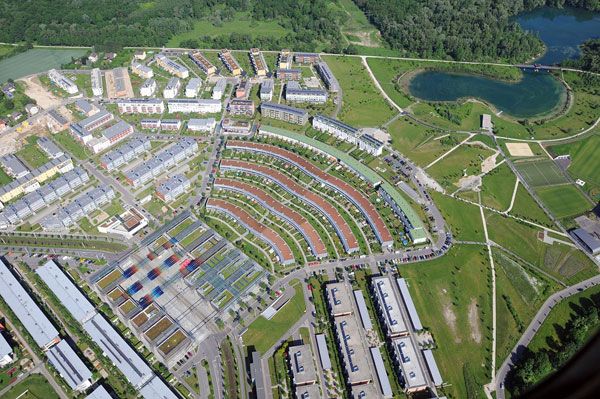
Solar City. Photo courtesy of Atelier Dreiseitl
2. The Canberra National Arboretum by TCL, Canberra, Australia
Canberra is an Arboretum with a capital A. It was created thanks to the growing awareness of the possibility of the extinction of many species. It is placed about six kilometers from the center of the city, on a 250-hectare area. The whole design is like a huge seed bank of the world’s most endangered tree species. The sustainability in this project is first rate, including the irrigation system. But the appearance is also important. That’s why we can also find a Visitor’s Center, the Events Terrace, a very nice pod playground, and other features here.
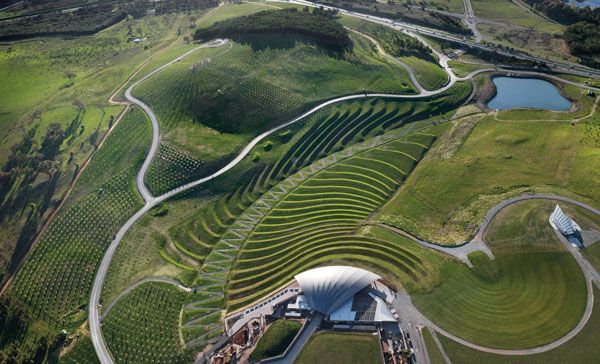
The sculptured landforms of the Central Clearing form part of the visitor arrival sequence. Photo credit: John Gollings
1. The Banjaran Hotsprings Retreat by Malik Lip & Associates Sdn Bhd, Ipoh, Perak, Malaysia
This is the best ecological design showing how to use surrounding natural resources without excessive interference. When your main aim as a designer is to protect the environment, you have to be careful. This place was merged with the tropical jungle by planting appropriate native vegetation and using mostly local natural materials. There are also water features, herb gardens, and geothermally heated water tanks. Everything is in harmony with nature. What more could you want? This project is simply a masterpiece!
– There are other outstanding ecological designs, but I wanted to share with you these 10, because they show the approach of the designers to planning the landscape in a way that preserves nature. It’s hard to do such things, but it is certainly worth it. The more aware people are about ecological design the better, because these days it’s more important than ever. Think about all the places you know that should be transformed into something better and friendlier for both nature and people. What other examples of fine ecological design can you share?Recommended Reading:
- Becoming an Urban Planner: A Guide to Careers in Planning and Urban Design by Michael Bayer
- Sustainable Urbanism: Urban Design With Nature by Douglas Farrs
- eBooks by Landscape Architects Network
Article by Kamil Rawski
Published in Blog

